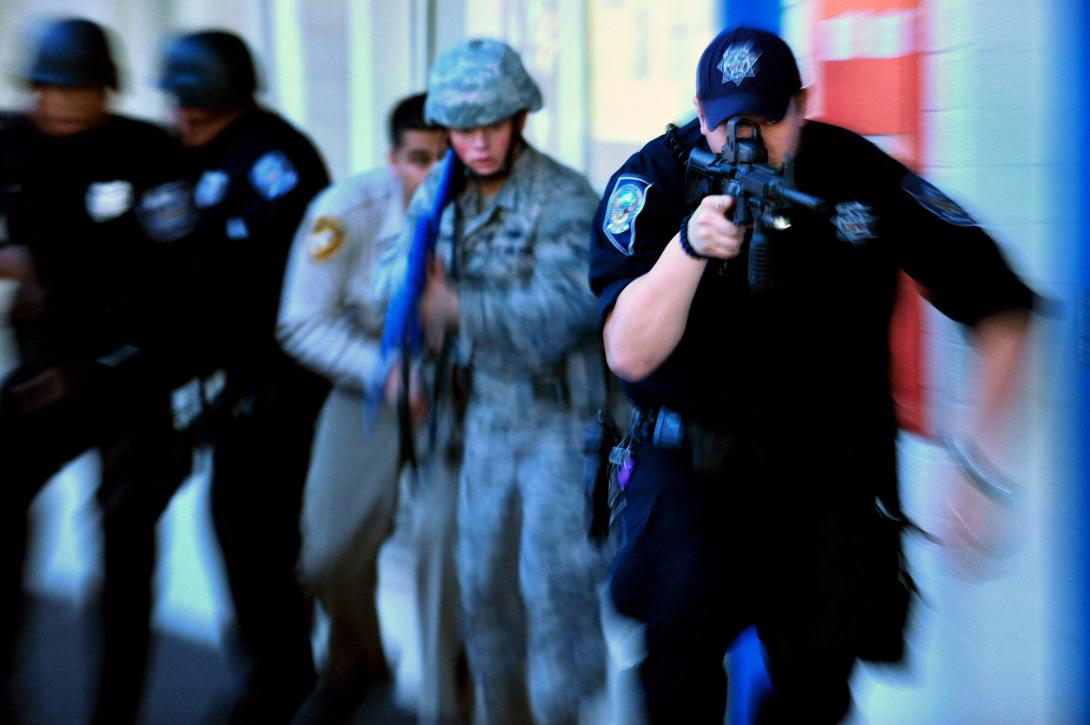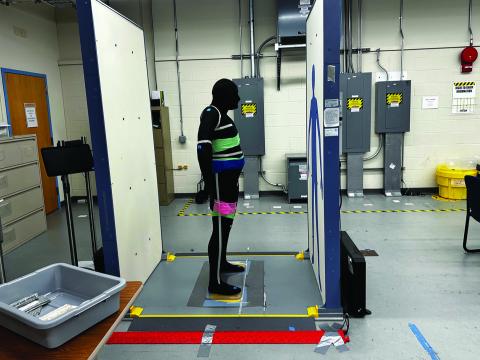Gunshot Detection Systems: The Present Need for a Safer Future
Hoping to build on measured successes of indoor active shooting sensing technology, the Department of Homeland Security (DHS) has its sights set on mobile technology that can provide the same detection and warning for outdoor use.
In September 2020, the department’s Science and Technology Directorate (S&T) partnered with Alarm.com to help advance the company’s Guardian product, part of the Shooter Detection Systems (SDS) the company already produces for indoor application, said Anthony Caracciolo, first responder technology program manager at DHS S&T.
S&T engineers will use the technology as the baseline and collaborate with industry to develop a product for outdoor use, Caracciolo said.
As it stands, gunshot detection systems are not an entirely new concept. ShotSpotter, for example, is one of the better-known systems. It has been in operation for 25 years and is used in more than 120 cities. Indoor gunshot detection systems use a combination of artificial intelligence, multiple sensors and access to cellular service to identify whether gunshots are fired and to notify local law enforcement. What is new is the vocal call by law enforcement for mobile detection technology that is easy to move, easy to set up and can easily function in outdoor settings, Caracciolo shared, and the DHS’s S&T Directorate will play a significant role in creating or tweaking existing solutions to meet police needs.
Those needs are punctuated by the first sobering sentence of the S&T’s Gunshot Detection Systems factsheet, which reads: “Active shooter events have become an almost weekly threat in the United States.” According to the Gun Violence Archive, there have been 414 mass shootings within the United States since January 1. With the help of S&T and an innovative private company, a mobile and outdoor gunshot detection system could soon be a reality.
Blast detection technology got its start in 1995 via research funded by the Defense Advanced Research Projects Agency (DARPA), the Defense Department’s research arm. DARPA funded research for the development of prototype systems that paired acoustic muzzle blast and ballistic shock wave signatures to accurately predict the location of gunfire events and associated shooter locations, according to SDS. In 2003, the Iraq War served as a wake-up call for the critical need of a shooter detection tool to protect U.S. troops from snipers.
SDS was founded in 2014 to commercialize the company’s Boomerang Shooter Detection System for public use and to protect “against the rising active shooter threat to our nation’s critical infrastructure,” according to the company’s mission statement. Developers want to leverage the Guardian’s capabilities for outdoor public events. The entire point here is mobility—the system can be deployed at a political rally during the day and at a concert that same night. Development of the modified mobile-and-outdoor-compliant gunshot detection technology is now in the works following a prototype test and a demonstration to generate improvements.
The detector system uses dual-mode detection: sound and infrared radiation. One challenge developers faced during testing had to do with the data log. “Some of the test fire shots weren’t being recorded and there was a timing issue with the clock,” Caracciolo said, noting the issue had been resolved. “Another issue was acoustic ringing—they'd get an echo from the sound so one of the things [SDS] had to do was redesign the housing that holds the speakers into a cone shape,” to eliminate the problem. Finally, the last matter in question was with long-term evolution (LTE) reception, Caracciolo said. “It was not as good as it needed to be, so they redesigned the antennas and had to install more robust ones … kind of like the antennas you see on top of a car with a little bump on it.”
It’s the company’s dual-mode detection technology that will make it viable for mobile and outdoor use, said SDS Managing Director Rich Onofrio. Some outdoor detection systems currently rely on the use of multiple acoustic sensors, such as microphones, to detect gunshots—making it difficult to move the sensing systems around. SDS’s system requires one point sensor for detection, he explained.
Using both sensors to confirm a gunshot reduces the false positives dramatically.
The use of sound and light as data sensors increased the technology’s accuracy, Caracciolo said. “Using both sensors to confirm a gunshot reduces the false positives dramatically.” Once a gunshot is detected, an alert that includes a map with the precise location of the occurrence is sent to law enforcement.
Even in the case of a weapon suppresser being used, such as a silencer, the dual-mode detection system can distinguish a lower or degraded signal from the flash and acoustic output, Onofrio said. “What we’re looking for is the heat signature from the firearm when it’s discharged.”
While testing is ongoing, SDS anticipates it will turn over the technology about November to DHS S&T Directorate, established by Congress in 2003 to research, develop and test innovative technologies to further national safety.
Routinely, first responders share technological gaps and needs with S&T, and in recent years have inquired about mobile gunshot detectors, Caracciolo said. “There will be an operational field assessment,” Caracciolo continued, “where they supply us with a couple prototypes and we go to the test range, set up the detectors, do some live fires and see how the detectors respond and how they alert those gunshots in the application that comes with the detector.”
For all the efforts government and industry engineers and technologists invest in development, too often deployment of the solutions can be delayed at best, and shuttered at worst, by financial constraints and competing needs all jockeying for the same pot of limited funding, Caracciolo said. “Most law enforcement operations don’t have a lot of money,” he noted.
Uses for this type of detection technology can extend well beyond law enforcement needs, Onofrio said. “So many of the installations we have currently for our indoor product our are actually K-12 schools, universities and corporate customers that are protecting their campuses,” he said. “There's certainly a need for that and we're seeing that ask for beyond just the law enforcement market.”
For much of its eight-year existence, SDS has worked with the DHS on various training and demonstrations. The use of detection technology isn’t without some controversy, and Caracciolo and Onofrio both noted in separate interviews that it is important to mention that the DHS and company have considered privacy concerns—the issue most often brought up by the public and advocacy groups—while conducting a market landscapes study for gunshot detection technology. The sensors are designed to listen for gunshots—period, Caracciolo said. “The technology is not recording any data or any conversations to be saved or analyzed by anyone … it’s not looking for any particular words or sounds.”
Unlike other technologies, SDS does not review gunshot data picked up by its dual-detection sensors before notifying law enforcement, Onofrio said. Collected data is contained within the jurisdiction. “There’s no human in the loop.” Caracciolo added law enforcement would have to notify the communities before deploying such technology. “When the community accepts them, then it’s less of an issue.”





Comments